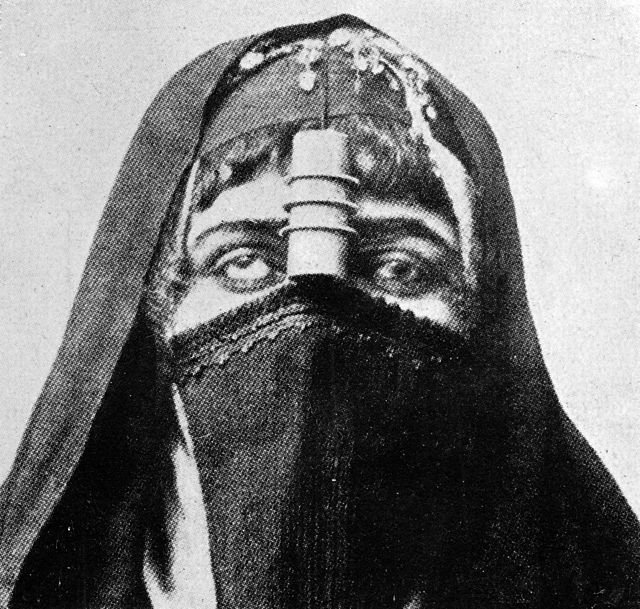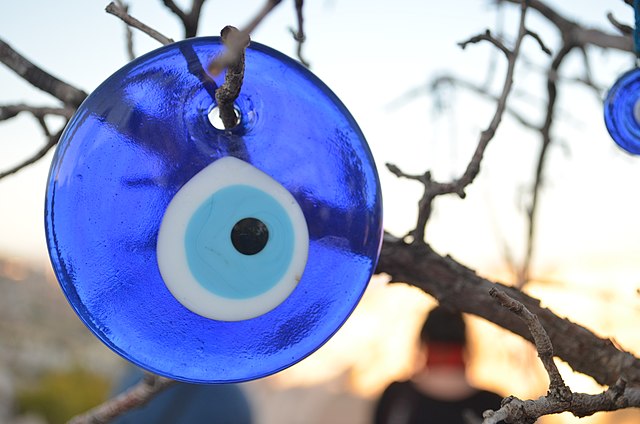The evil eye is a supernatural belief in a curse brought about by a malevolent glare, usually inspired by envy. The belief in the evil eye among humans has existed since prehistory, and amulets to protect against it have been found dating to about 5,000 years ago. It is estimated that around 40% of the world's population believes in the evil eye.
A person from Cairo, reputed to possess the evil eye.
Eye beads are one of many popular amulets and talismans used to ward off the evil eye.
Kylix eye cup (530–520 BC), inscribed with Chalcidian text. It features an eye motif, likely to ward off the evil eye.
Tree with nazars in Cappadocia, Turkey
An eye bead or naẓar is an eye-shaped amulet believed by many to protect against the evil eye. The term is also used in Azerbaijani, Bengali, Hebrew, Hindi–Urdu, Kurdish, Pashto, Persian, Punjabi, Turkish and other languages. In Turkey, it is known by the name nazar boncuğu, in Greece is known as máti. In Persian and Afghan folklore, it is called a cheshm nazar or nazar qurbāni (نظرقربانی). In India and Pakistan, the Hindi-Urdu slogan chashm-e-baddoor is used to ward off the evil eye. In the Indian subcontinent, the phrase nazar lag gai is used to indicate that one has been affected by the evil eye.
A Turkish nazar boncuğu
Eye beads or nazars – amulets against the evil eye – for sale in a shop.
Eye beads
A depiction of a nazar boncuk on a Turkish airplane.







